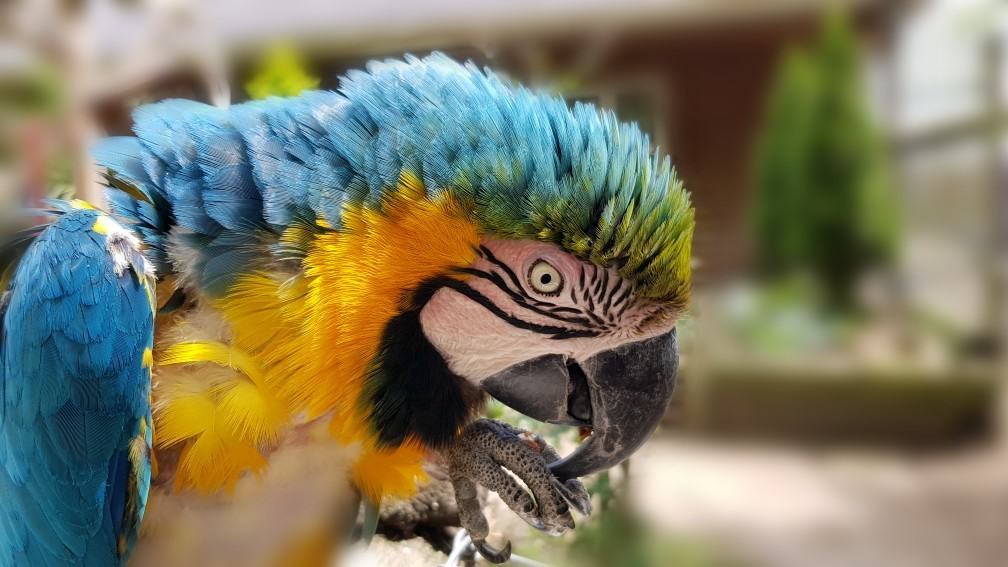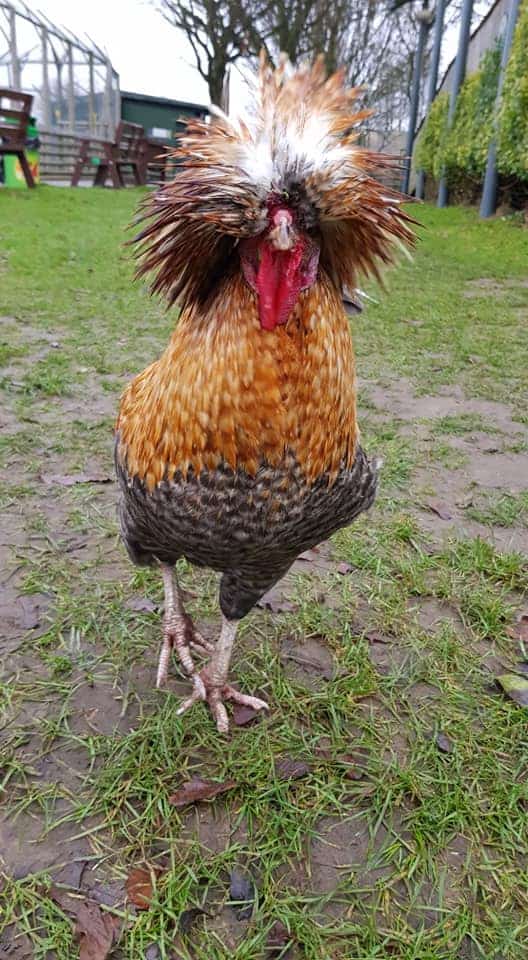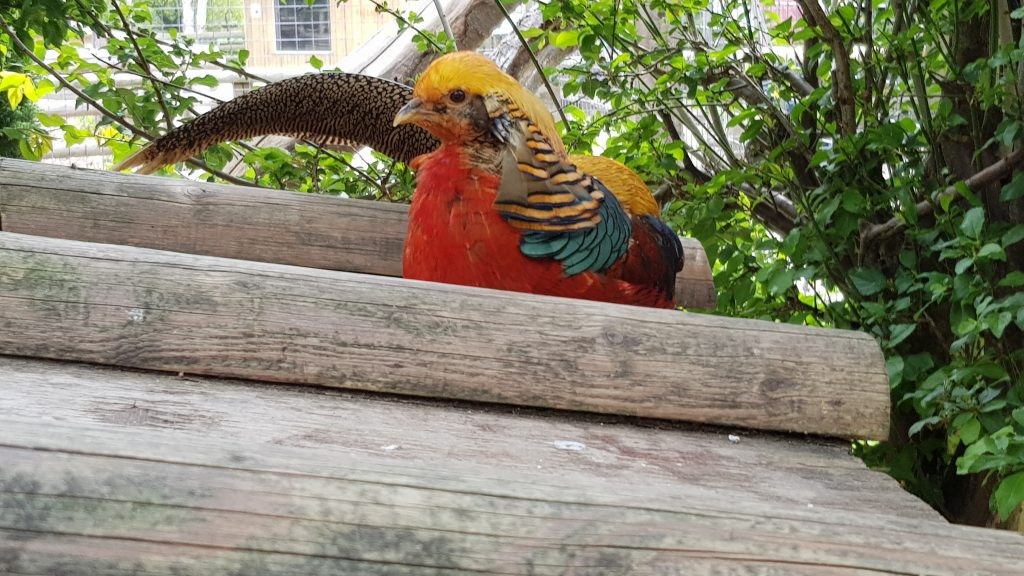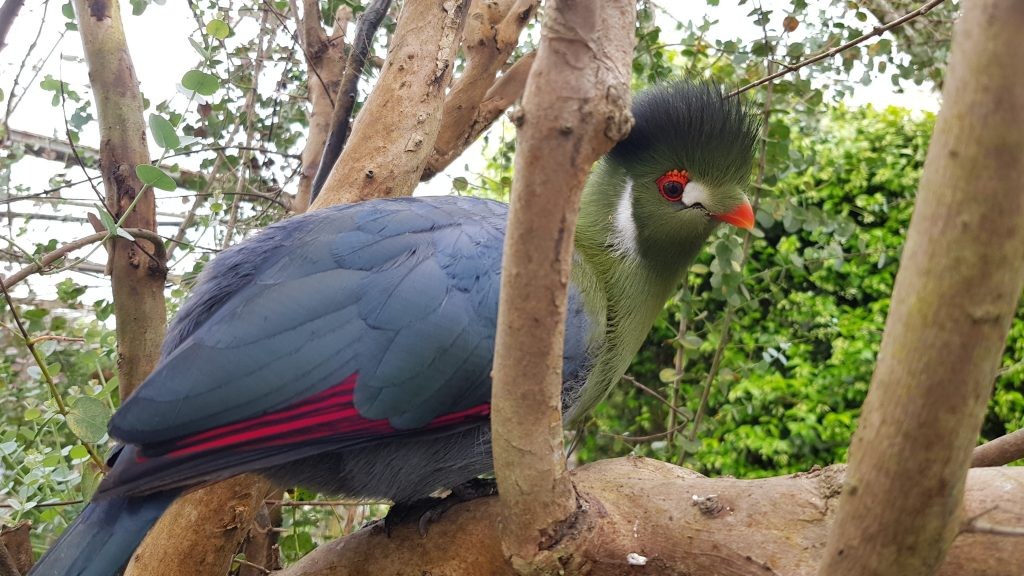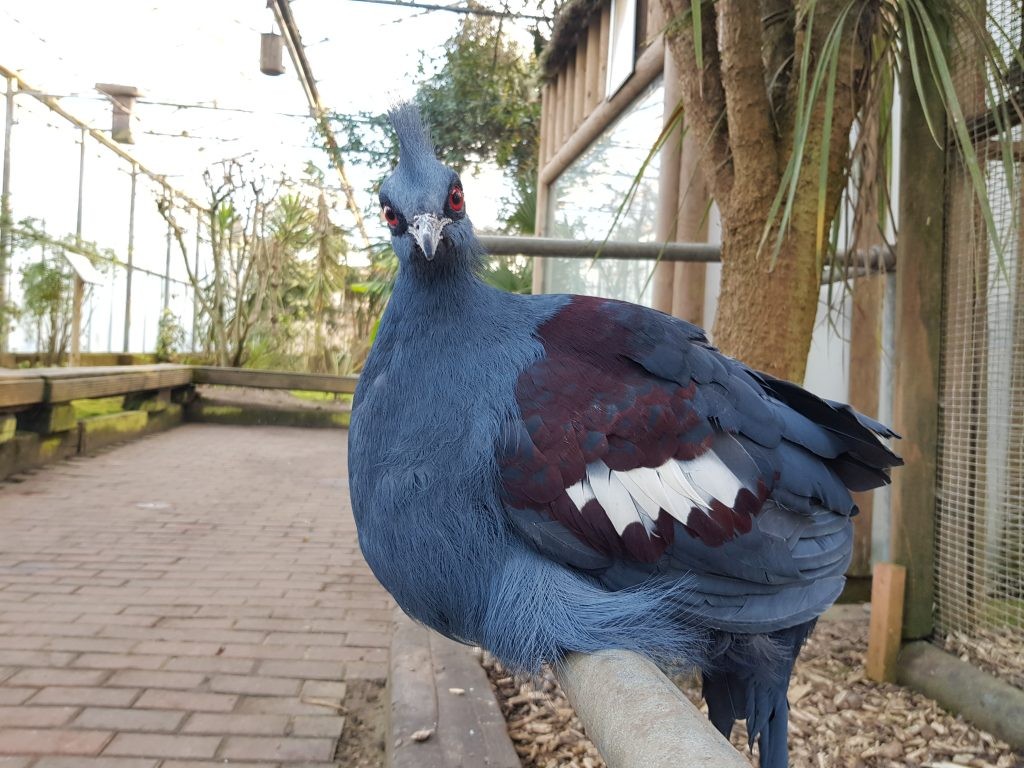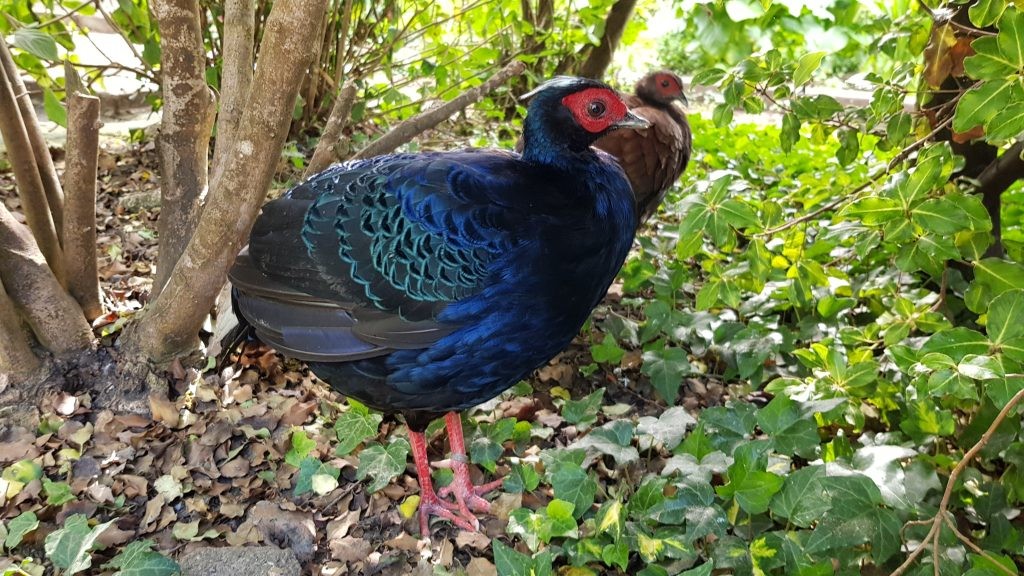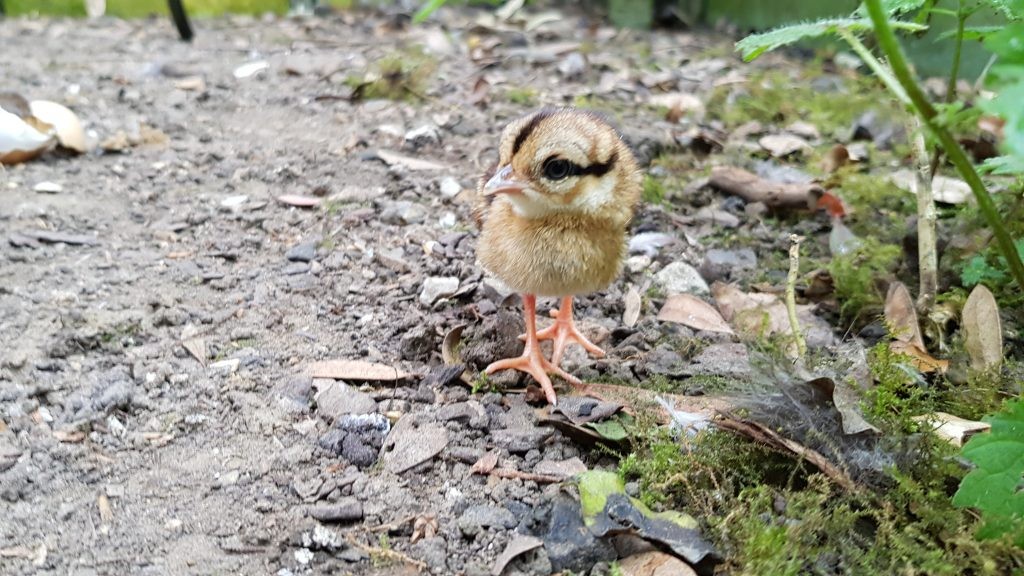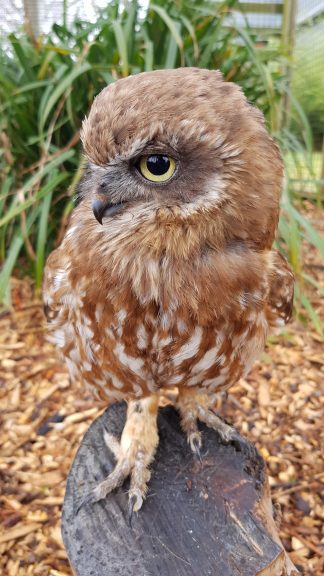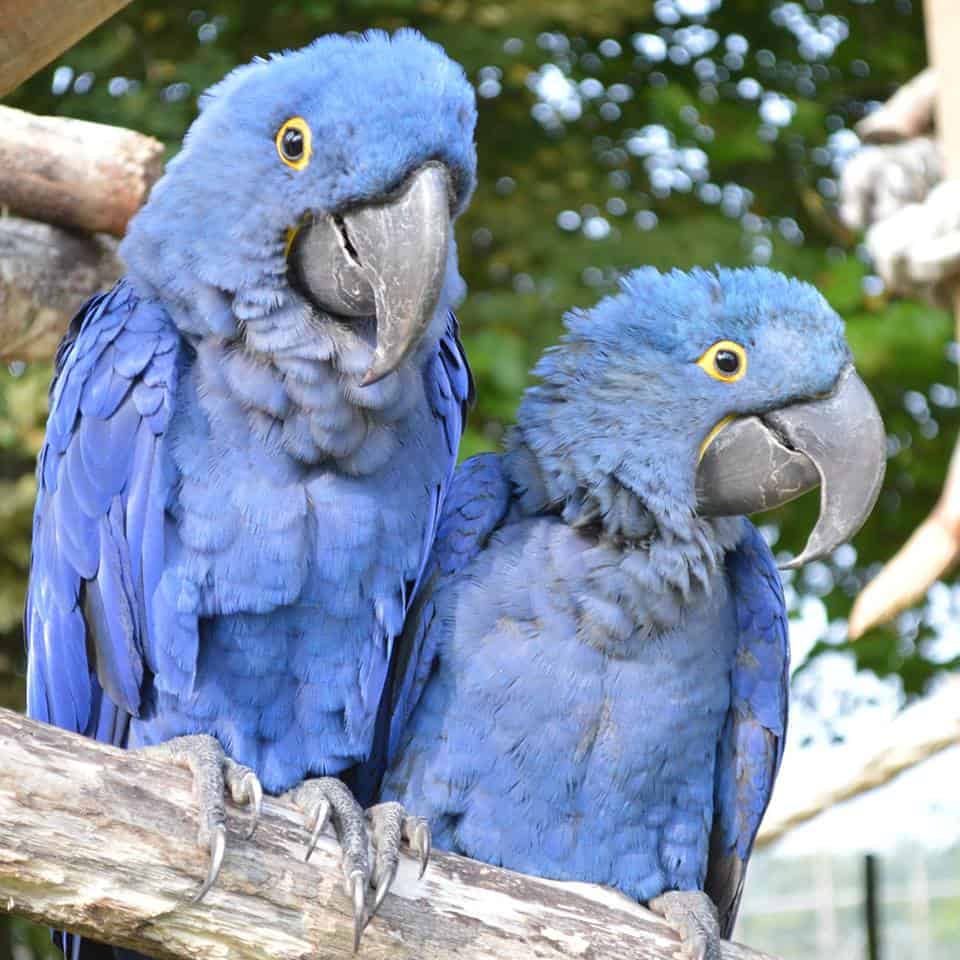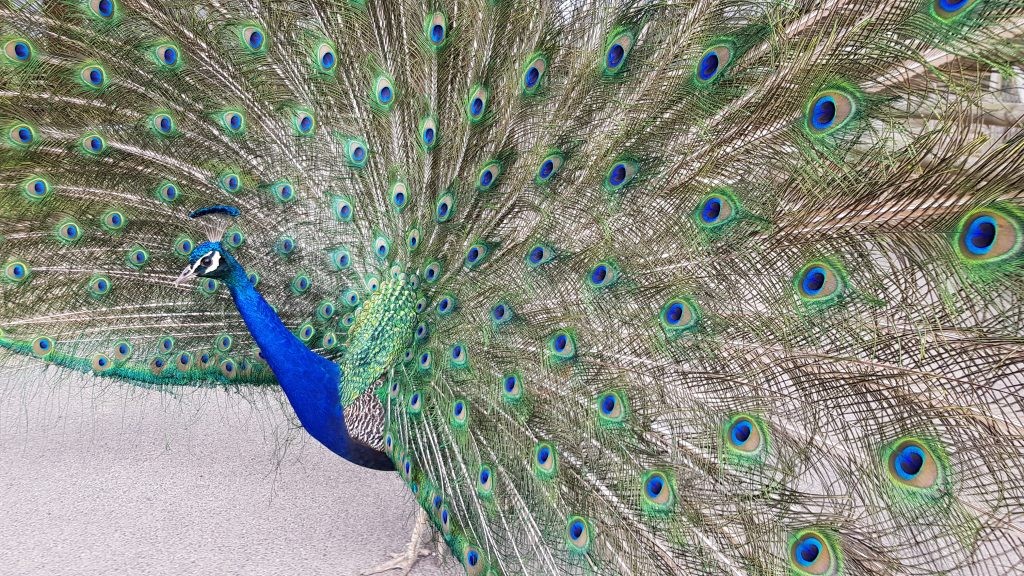What is your favourite bird? I’ve found that I’m especially drawn to birds with blue colouration such as Kingfishers, Hyacinth Macaws and even the Kestrel with the subtle blue head and tail of the males. But I’ve learned that everyone admires birds differently, most because of their gorgeous colours, but often because of some species’ ability to disappear in their environment due to the cryptic patterning of their feathers.
There are over 10,000 bird species worldwide and if you pick up any ID bird book you will quickly notice that birds seem to represent a huge range of the colour spectrum. The diversity of hues across this group is astonishing, but for me I can’t help but wonder why some have such brightly coloured feathers when it could make them more vulnerable to predators, and how do they even create these fantastic feathers in the first place!? To explore the different colours that we can see amongst our birds at the park, we have to ask two questions: how the colours exist, and what are their function?
How do birds see colour?
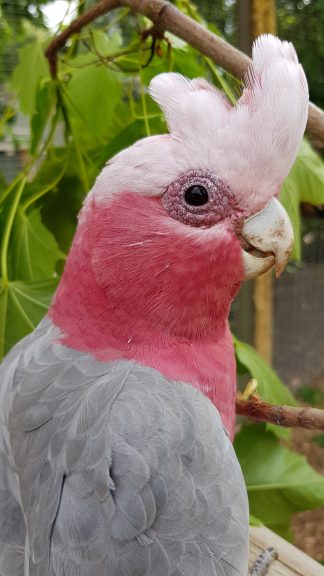
“Pinkie” the Galah Cockatoo. Did you know that you can tell some Cockatoos apart by the colour of their eyes? Male Galah Cockatoos have a dark iris, whereas females have a pink iris.
We can’t delve too much deeper into bird colouration without considering how birds perceive their surroundings. I used to think that animals must see in a similar way to me, but that couldn’t be any further from the truth. What I wouldn’t give to see the world through a bird’s eyes! We are missing out on an entire primary colour as most birds can see ultraviolet light.
Birds even have special oil droplets in front of the cones in their eyes which sharpens their colour vision even further. Colour is obviously very important in the avian world and they must look very different to one another than they do to us.
How do birds make colour?
Birds regularly replace their feathers as their plumage is prone to wear and tear, not very useful if you need to fly and keep yourself warm! Colour can be achieved in a couple of ways, the first is by using pigments. Some pigments can be manufactured from compounds available in the body, or they can be eaten and transferred into a bird’s feathers, beaks or skin.
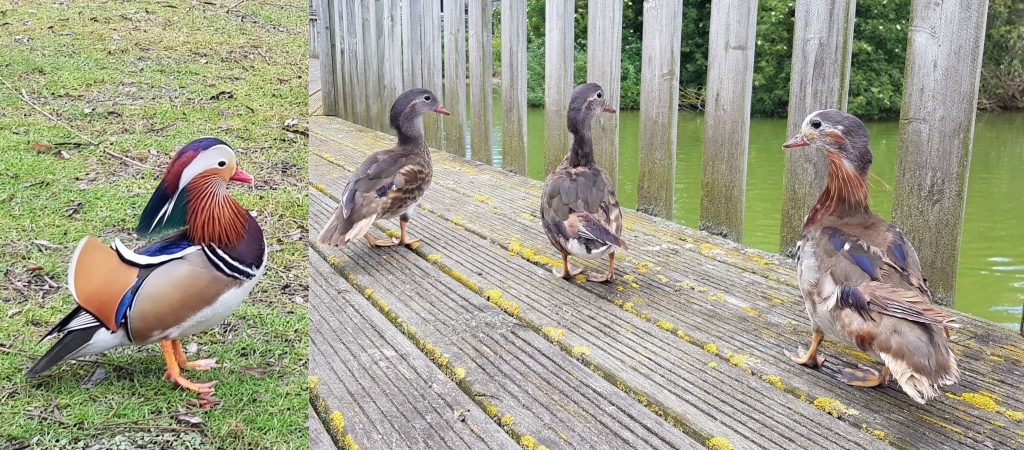
Our male Mandarin ducks want to look their best to attract a mate, but don’t want to stand out during the rest of the year. Soon after the breeding season they become scruffy and look similar to the females. They achieve this eclipse plumage through moult.
Melanin is a pigment that is responsible for our own hair colour and is used by most of the animal kingdom. If a feather doesn’t contain melanin, feathers will appear white. There are two types of melanin and these molecules can be found in almost every bird species on the planet. Eumelanin is responsible for black plumage. Different concentrations of eumelanin will create various shades of grey to deep black when deposited heavily.
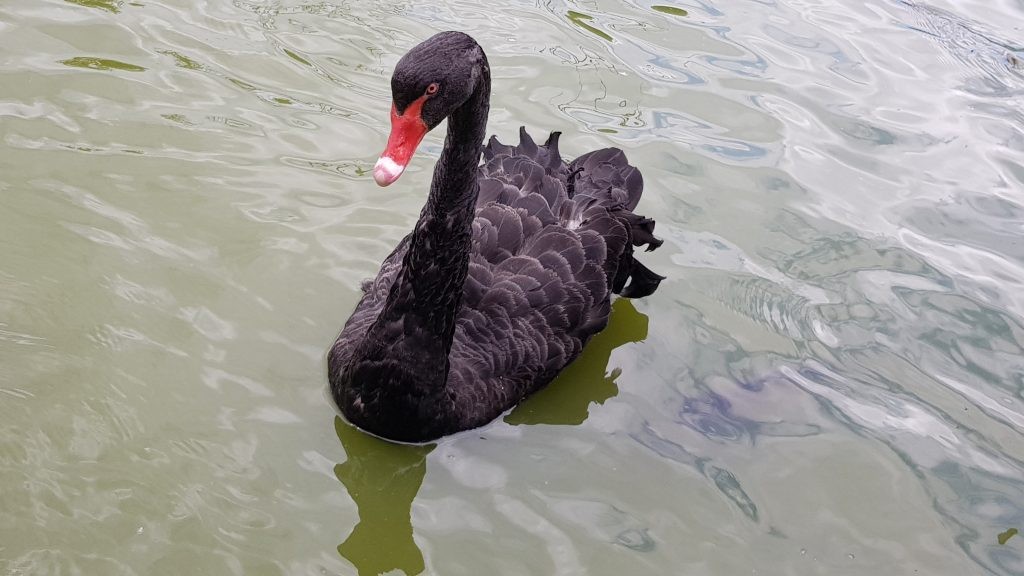
Our female Black Swan’s cousins are native to Australia. Did you know that the colour black can actually help birds to stay cool? Darker colours absorb heat and allow it to be directed back into the surrounding air away from a bird’s body.
Melanin also strengthens and helps to protect feathers meaning that birds with an aerial lifestyle usually have black wing tips helping the feathers to avoid abrasion from the wind sweeping over the wings. Almost every sea bird and long-haul flier has this universal patterning on the wingtips.
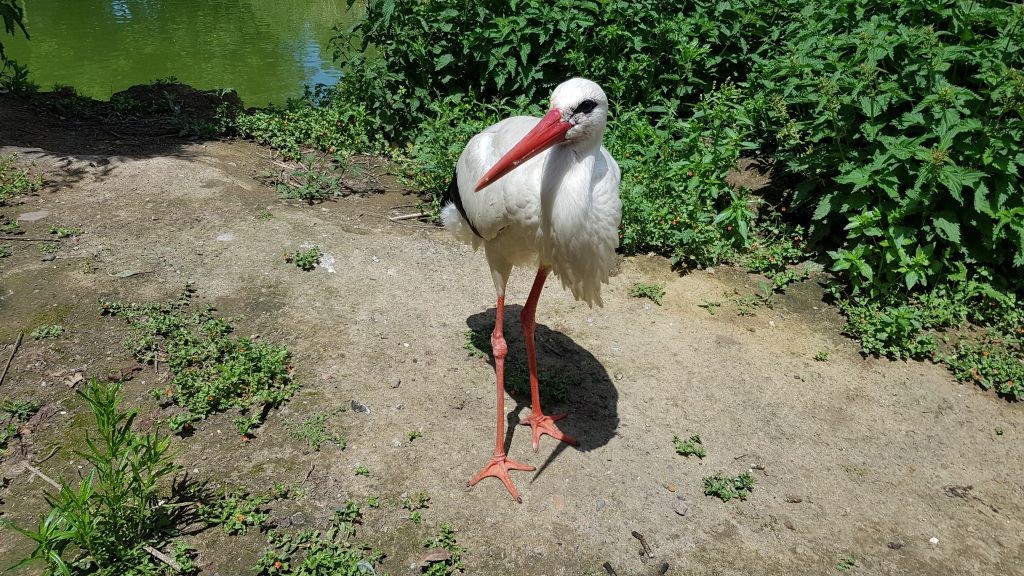
You can see that our White Storks’ plumage isn’t very colourful, except on the flight feathers where thick deposits of eumelanin are put down.
The second type of Melanin is Phaeomelanin. These pigments create a whole range of colours from bright gold to brown, and when used with eumelanin almost every shade of brown can be created.
Another common pigment used by birds are Carotenoids, which create vivid reds, oranges and yellows. Yellow is the most common carotenoid-based colour and red is widespread but less common. Unlike Melanin which more or less only come in two forms, Carotenoids can be any one of more than a dozen different types. They are also responsible for the pink plumage of our flamingos. Carotenoids are different in another way too as they can’t be synthesized by birds and must be acquired through the bird’s food.
Some pigments are not very common. Our White-cheeked Turaco has two copper-based pigments that are unique to turacos, red Turacin and green Turacoverdin. Parrots also have their own unique pigments for making yellow and red known as Psittacofulvins. Unlike Carotenoids, parrots can make these pigments within their bodies without having to ingest them. When Psittacofulvins are used with blue structural colouration they produce a brilliant green.
Some colours can’t be achieved by using pigments alone. The second way birds create colour is through structural colouration. The colour blue is a consequence of light interacting with the microstructures of a feather; if the feather loses its structure it will also lose its colour. The colour green is usually produced by using a combination of yellow Carotenoids and blue structural colouration.
Birds that appear glossy or who’s plumage seems to change colour depending on the light and the angle at which it is viewed have a different type of structural colouration called iridescence. Iridescent feathers can seem to change colour from black to green or purple.
Why are birds feathers colourful?
Creating these colours are expensive for birds to produce, so investing in colour serves a variety of purposes. Birds need to recognise each other, whether it is a rival or their own young. Did you know that each of our Humboldt Penguins has a distinctive marking across their breast? Similar to the way that our fingerprints are unique, a Penguin will never have the same pattern of spots. There are often differences in colour between different ages of birds as well and some go through a range of colours before they reach their adult plumage.
Juvenile Humboldt Penguins are much greyer than adults and will not develop their white eye stripes until they are a year old.
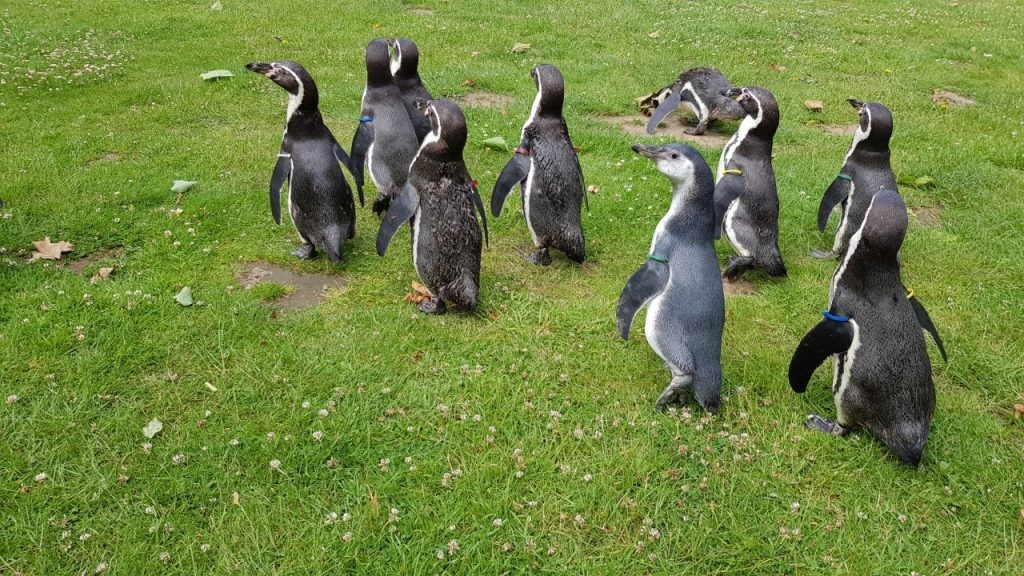
Humboldt Penguins on their daily walk at Wingham Wildlife Park. Did you know that the penguins’ black and white appearance helps them avoid detection by predators? If you are a predator looking at a penguin from above the dark colour is similar the bottom of the ocean. In contrast if viewed from below the white helps mask against the surface of the water. This type of colouration is called countershading.
The ability to conceal oneself from predators is a huge advantage for many birds. Some birds are altricial meaning they are born naked and blind before quickly growing feathers, whereas some are precocial where they begin life developed and able to feed itself almost immediately. The soft natal down of precocial chicks is often boldly patterned practically making them invisible to our eye until they move.
Sometimes birds use their plumage to look like something else. Our Boobook Owl Tim is quite well camouflaged but his eyes are a very obvious feature. When startled he can shut his eyes and change his posture to help him to look like part of his environment.
Sometimes birds that are brightly coloured with very bold markings somehow seem to disappear. Rainbow Lorikeets have dark bands and blocks of colour which help to break up their outline when in the canopy. Ours are very noisy but unless they move they can be as equally hard to spot as the more cryptic ground dwelling quails!
Rainbow lorikeet juvenile being fed by parent. The green colour of the fledgling’s back matches closely with its surroundings making them difficult to pick out.
When we think of birds at the park with the most brilliant colours first thoughts turn towards the parrots. Most species are actually monochromatic, where both sexes look alike. To determine the gender of these birds at the park we would have to take a feather sample and send it off for DNA testing to find out if they were male or female.
But for about half of the world’s bird species, males and females can be told apart by differing plumage colouration, and these species are sexually dichromatic. At the park the most extreme example of this is our Eclectus Parrots. Each sex’s appearance is so different they almost look like different species!
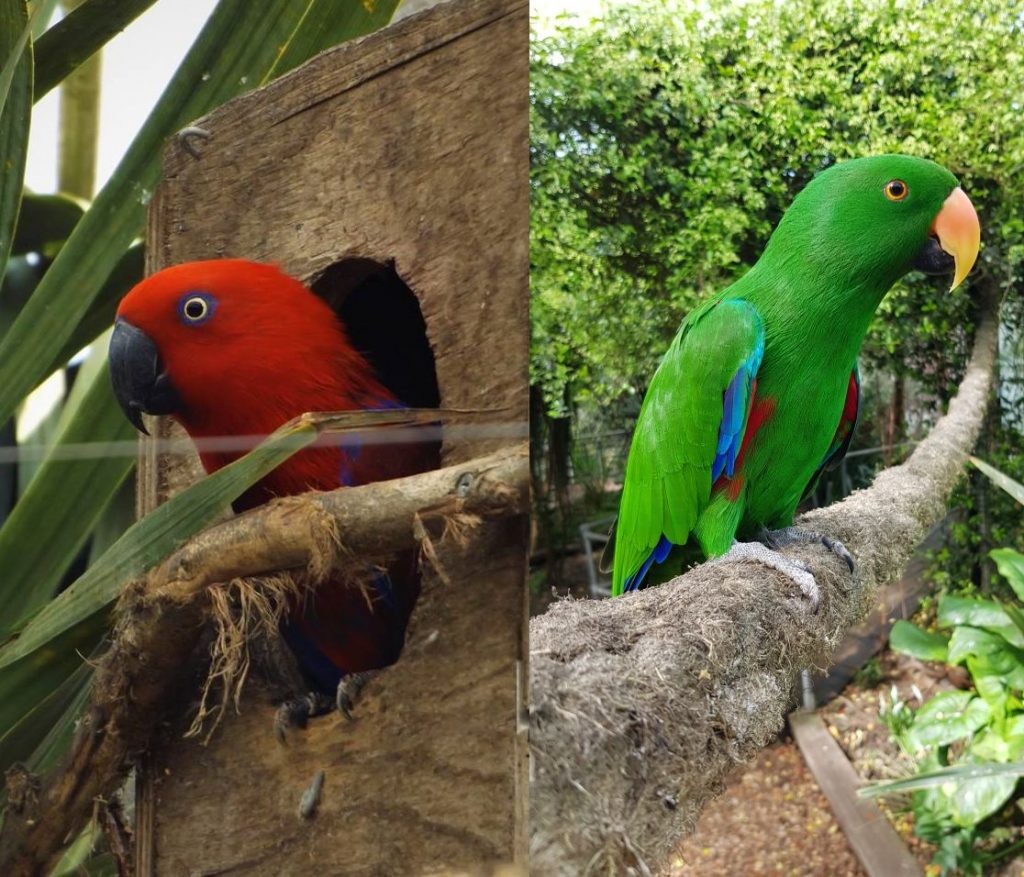
Eclectus Parrots are dichromatic as the females are bright red female and the males are a brilliant green.
An important part of bird behaviour is being able to signal with their plumes. Depending on the species they may need to signal to other members of the same species to attract potential mates, communicate to their offspring, rivals, neighbours and other members of the flock. Birds can also use markings to frighten potential predators by exposing a sudden flash of colour.
In species where females are attracted to bold and brilliant colouration we can see some of the most extravagant and extreme ornamental feathers. You can’t walk around the park and not notice the theatrics of our peacocks, yet the females are drab in comparison. Sometimes the colours of birds can be a result of sexual selection. Males can compete for females by fighting, but also through a display of colours to win over a potential mate.
I will probably always be fascinated by birds and their colours, but there is still so much more to learn! Did you know that some pigments are still a mystery? For example, we have no idea what pigments make our chicken chicks that recognisable fluffy yellow. How many birds have pigments that are unique to their species like our Turacos? There is so much more left to discover!
Come and visit all these beautiful and vibrant species at our park soon.
